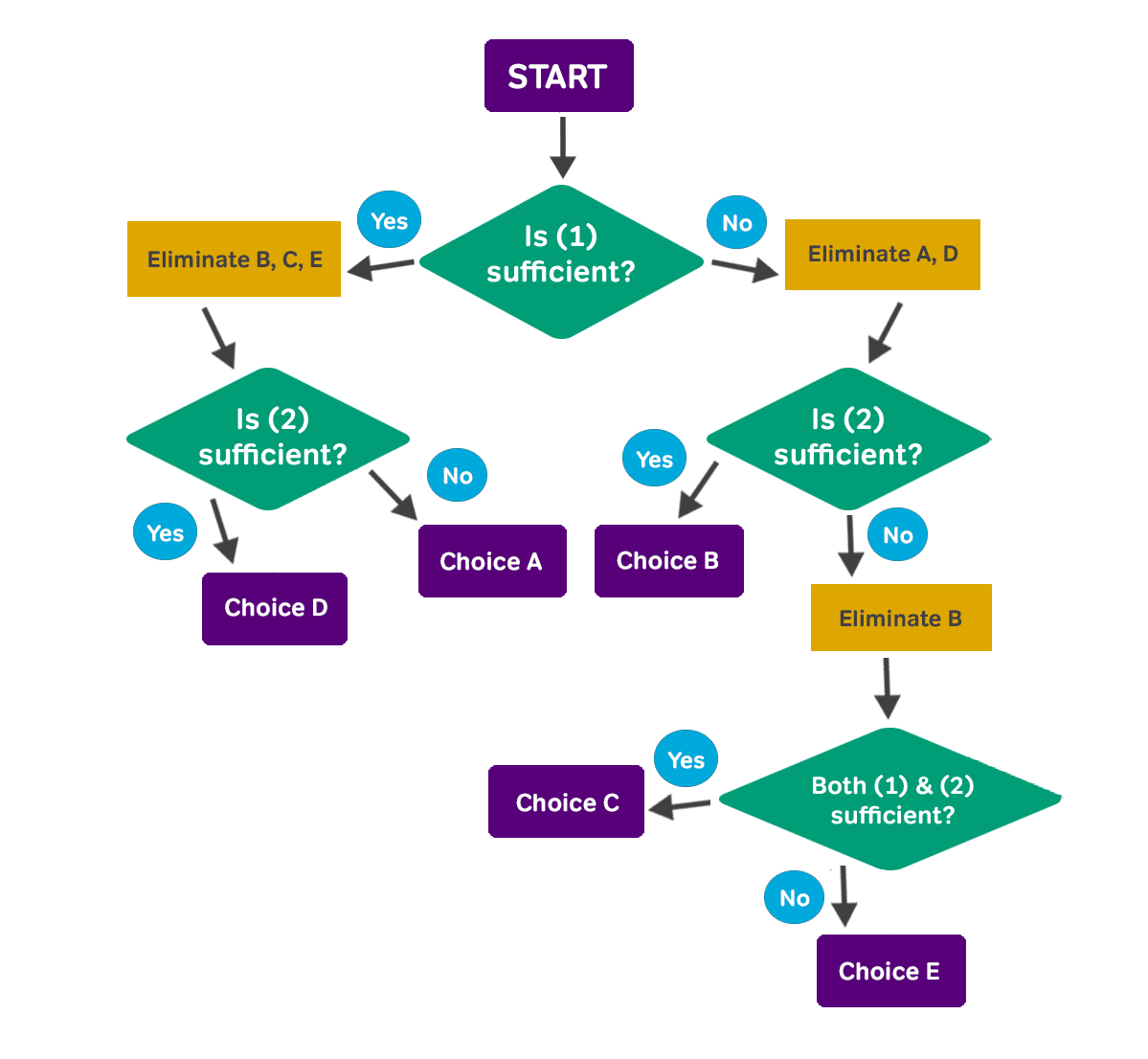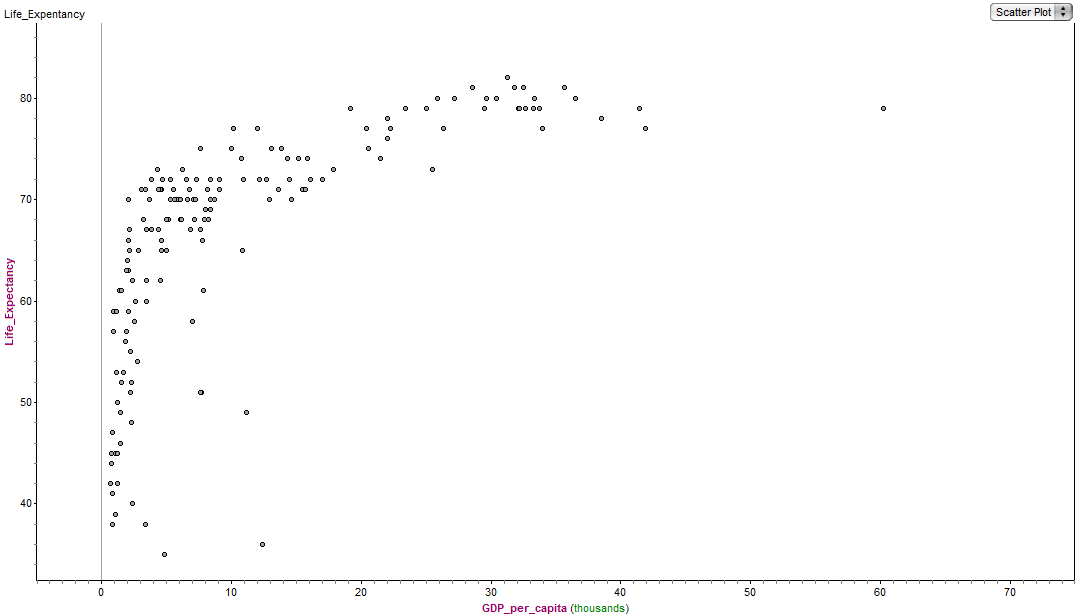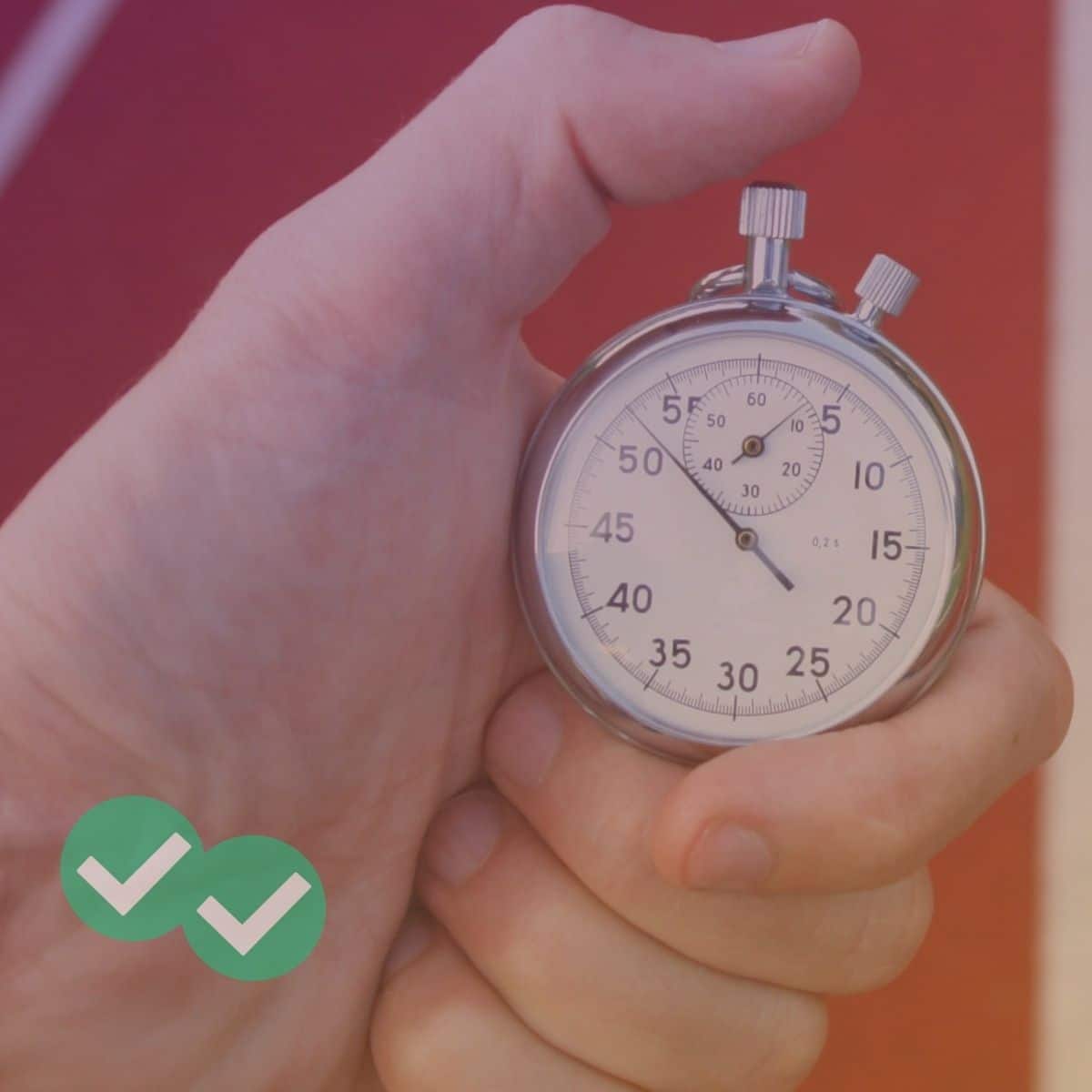
The GMAT Data Insights section contains five types of questions. This post will focus on Data Sufficiency. On the GMAT, the format of each Data Sufficiency problem is the same: you’re given a question and two statements. It’s up to you to decide whether the statements give you enough information to answer the question.
You don’t need to give the answer to the actual question. You just have to decide whether either statement (or both statements) gives data that is sufficient for finding an answer—hence the term data sufficiency!
What is GMAT Data Sufficiency?
The Data Sufficiency (DS) question type is on point for the GMAT because arriving at the correct answer is more about logic and critical reasoning than deep mathematical knowledge or ability.
On the Data Insights (DI) section, you get 45 minutes for 20 questions. Of these 20 questions, approximately 5-6 will be Data Sufficiency questions. Furthermore, when the GMAT launched it’s revised test in November of 2023, Data Sufficiency questions underwent a few significant changes:
- Data Sufficiency questions no longer test purely mathematical content, so you won’t be asked to solve algebraic expressions or problems based solely on numerical properties.
- Data Sufficiency questions now focus on applying logic and reasoning strategies to real-world contexts, which means that you should expect most of the quant-based questions to be presented as word problems.
- There are now quant and verbal Data Sufficiency question types. Verbal Data Sufficiency questions come in two flavors:
- 1.) Questions that are require only verbal reasoning skills 2.) Questions that require a combination of verbal and quantitative reasoning skills.
So, let’s talk basic strategies for approaching DS questions! The following tips will help prepare you for these uniquely challenging problems.
GMAT DS Tip #1: Memorize the Answer Choices
The answer choices always consist of the same five options in the same order. You should memorize these now!
- A. Statement (1) ALONE is sufficient, but Statement (2) alone is not sufficient to answer the question asked.
- B. Statement (2) ALONE is sufficient, but Statement (1) alone is not sufficient to answer the question asked.
- C. Both Statements (1) and (2) TOGETHER are sufficient to answer the question asked; but NEITHER statement ALONE is sufficient.
- D. EACH statement ALONE is sufficient to answer the question.
- E. Statements (1) and (2) TOGETHER are NOT sufficient to answer the question asked, and additional data specific to the problem are needed.
Just remember, it’s “One, Two, Both, Either, or Neither.” Got it?
GMAT DS Tip #2: Consider the Statements Separately
For Data Sufficiency problems, you first have to consider whether each statement, by itself, is sufficient. Only if both statements are not sufficient separately would you consider the sufficiency of the information in the combined statements.
One common mistake is to carry over information from Statement (1) into Statement (2). You have to “wipe the slate clean” after looking at Statement (1).
Helpful strategy: Consider whichever statement is the simplest first. That’s because the GMAT loves making Statement (1) a huge, complicated, juicy statement and Statement (2) something incredibly brief. If that’s the case, consider Statement (2) first.
GMAT DS Tip #3: Smart Elimination
GMAT Data Sufficiency problems test your logic skills as well as mathematics. Let’s look at a flowchart to help land on a correct answer. This is based on examining Statement (1) first, but a similar flowchart would apply if you looked at Statement (2) first instead.

So let’s talk about the choices, starting at Statement (1).
- Case 1: Statement (1) is sufficient. That means the correct choice is either A or D. From there, it’s a simple check: Is Statement (2) ALONE also sufficient? If yes, then pick D; if not, pick A.
- Case 2: Statement (1) is NOT sufficient. Now the correct choice is one of B, C or E. It can be a bit trickier to find the right choice in this case. Move to Statement (2).
- Case 2A: Statement (2) is sufficient. Great! Choice B is correct.
- Case 2B: Statement (2) is NOT sufficient. Ok, so we can eliminate B, but that still leaves C and E as contenders. Now you have to figure out if BOTH statements taken together could solve the problem. If so, then C is your answer; if not, then select E.
Notice that in either case, the first choice eliminates either two or three choices right off the bat! If you had to guess from that point onward, then your chances have improved greatly.
Practice Problem
Click here for the answer
D. EACH statement ALONE is sufficient to answer the question.
Consider Statement (1) first. Suppose there are \(x\) widgets, and the price of each one is \(p\). From the given information, then we know that \(xp = 480\). Statement (1) can be interpreted mathematically as follows:
\(x(p-2) = 480 – 160\), or
\(xp-2x = 320\)
Since we know the value of \(xp\), the above equation can be used to solve for \(x\), and then you can derive \(p\) directly from the fact that the product is 480.
Ok, so Statement (1) is sufficient. Thus, we can eliminate three choices, B, C, and E!
Next, look at Statement (2). This one can be translated into mathematics as follows:
\(x(p+1.50) = 480 \cdot 1.25\), or
\(xp+ 1.5x = 600\)
It’s a similar situation, and we’d easily be able to solve for both variables. This is enough to narrow down the correct answer.
GMAT DS Tip #4: Avoid the Temptation to Calculate the Answer
GMAT Data Sufficiency is all about the question, “Could you find the answer?” The apprentice problem-solver with poor managerial instincts will dutifully work through the several steps necessary for finding actual values, all without access to a calculator, mind you.
On the other hand, the master GMAT test-taker would realize: “From the equations I built to analyze the real-world scenario I was given, I could work all the way through to a solution if I wanted to.” That, in and of itself, answers the sufficiency question right there, and that’s all you need to do! The actual correct answer values for DS questions are irrelevant.
Practice Problem
Click here for the answer
D. EACH statement ALONE is sufficient to answer the question.
First, the given information is very helpful. If we let \(x\) stand for the number of visitors on day 1, then on day 2 we’d have \(x + 3\), and day 3 would be \(x + 6\), etc. By the time day 7 rolls around, there would have been \(x+18\) visitors.
Statement (1) tells you the total number of visitors. Avoid the temptation to solve an equation here. All you need to know is that \(x + (x+3) + (x+6) + \cdots + (x+18) = 126\) is an equation in a single variable. Even better, it’s a linear equation, which is guaranteed to have a solution. It doesn’t matter what the solution actually is; Statement (1) is sufficient.
Similarly, Statement (2) boils down to the equation, \(x+18 = 3x\)—also quite solvable.
Both statements are sufficient individually.
GMAT DS Tip #5: Focus on Sufficiency
On the GMAT test, Data Sufficiency problems may be quite misleading. As discussed above, you’re not looking for the one, correct answer. You’re answering the question, could you find the answer? And sometimes that answer is “no.”
Conclusion
GMAT Data Sufficiency problems can be very challenging. However, if you keep the five tips above in mind, you’ll be well on your way to higher and higher GMAT scores on test day!
With Data Sufficiency now part of the Data Insights section, you’ll want to make sure to use prep materials for the current GMAT. Magoosh GMAT offers over 800 practice questions, 200 video lessons, and full-length practice tests all updated for the new GMAT. Try us for free with a 1-week trial today!





